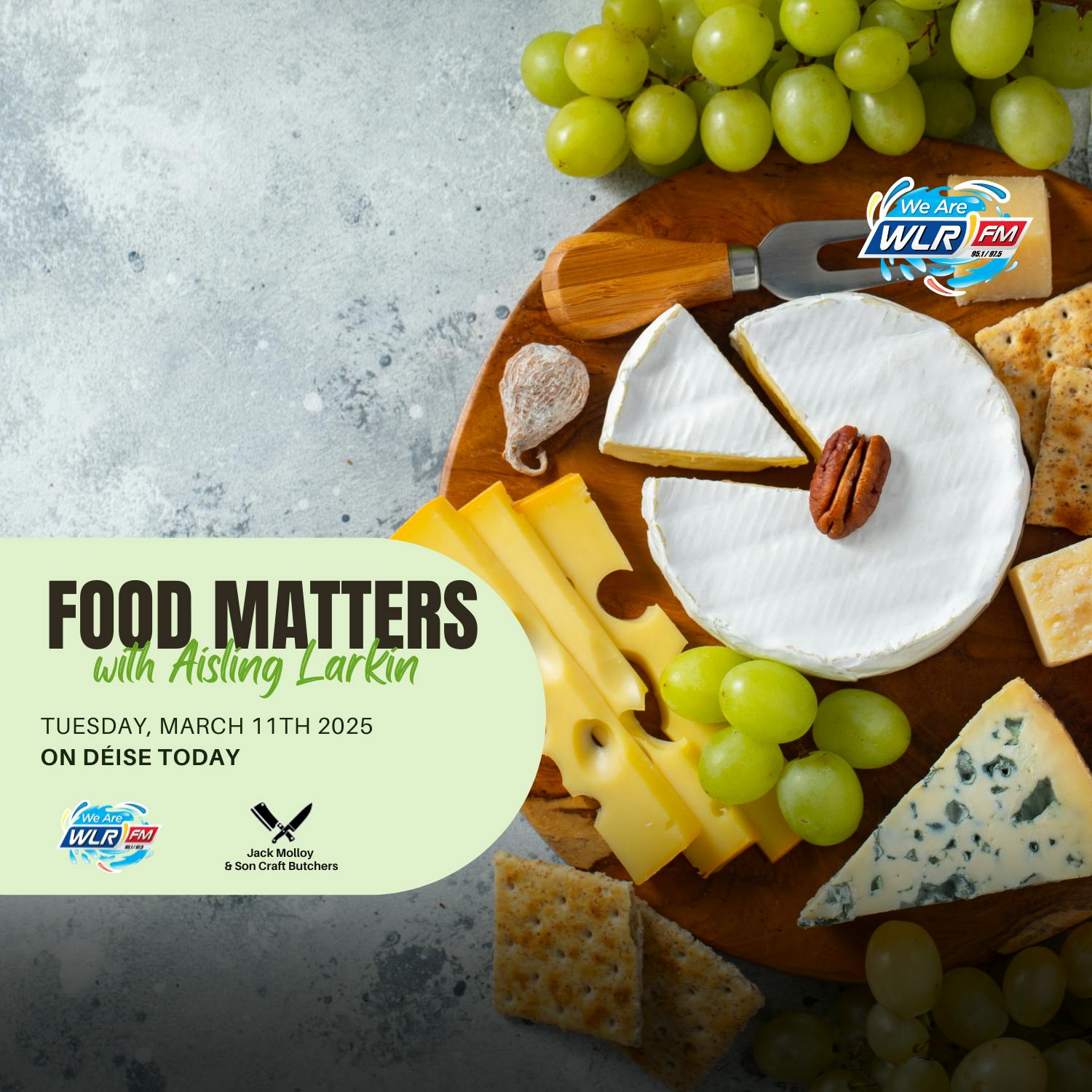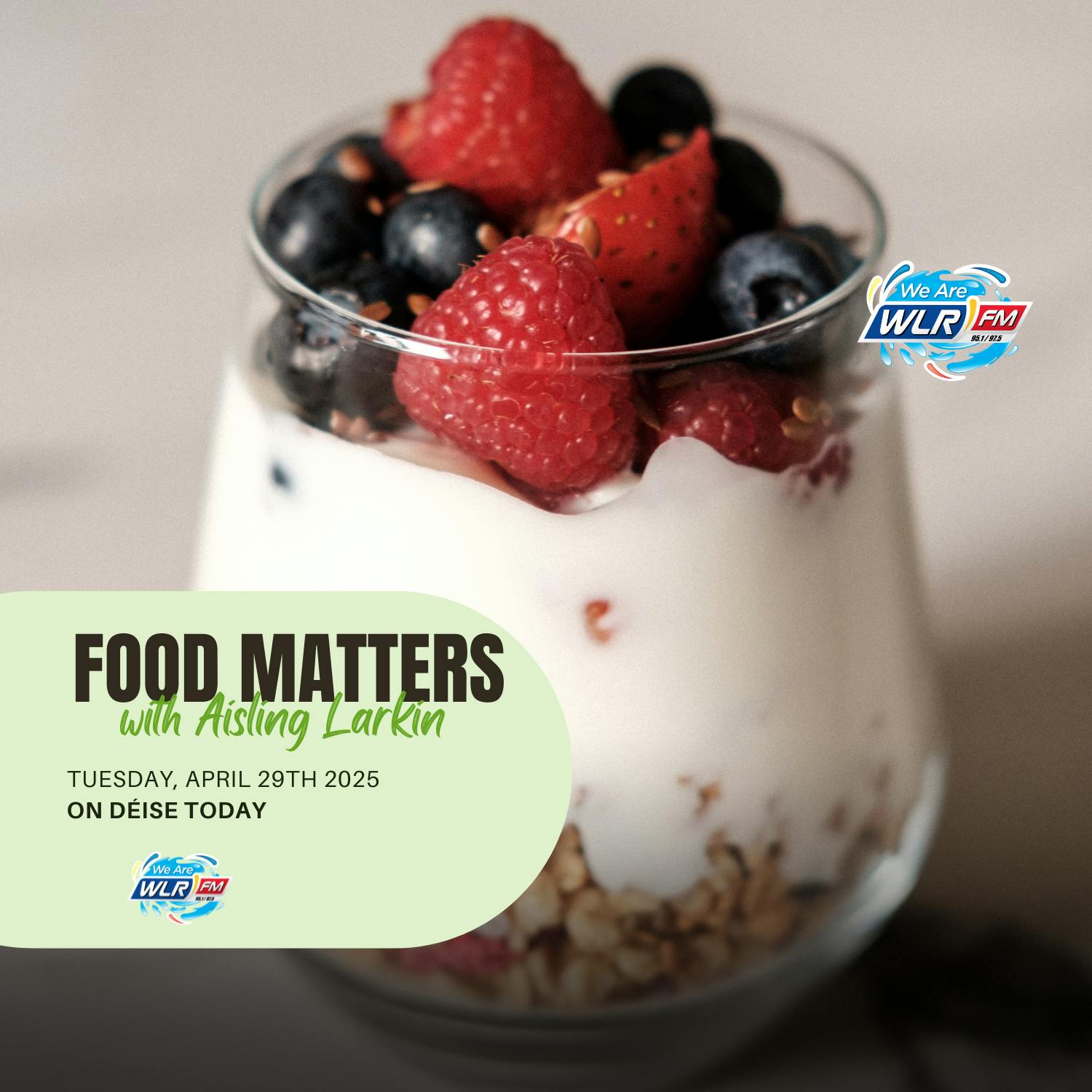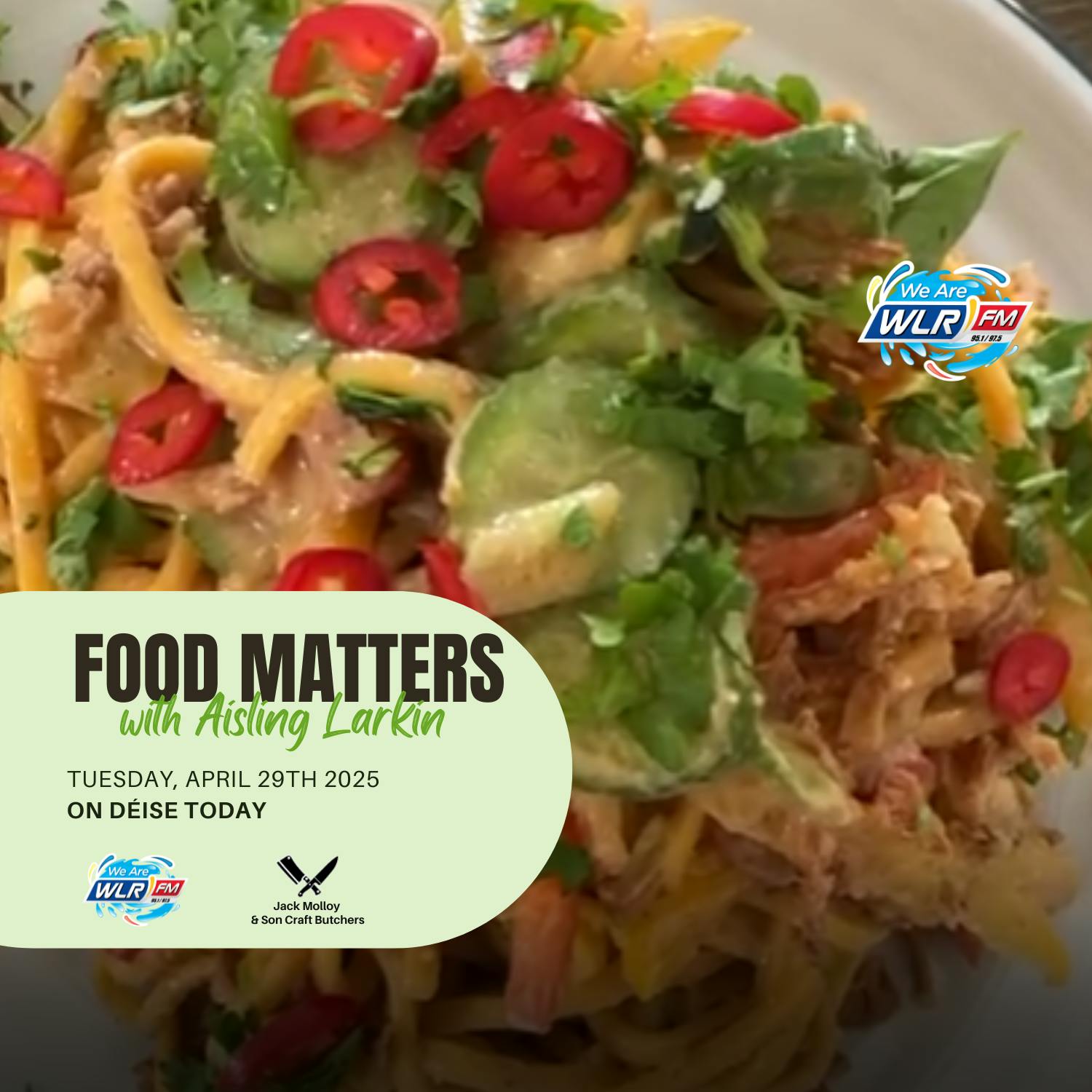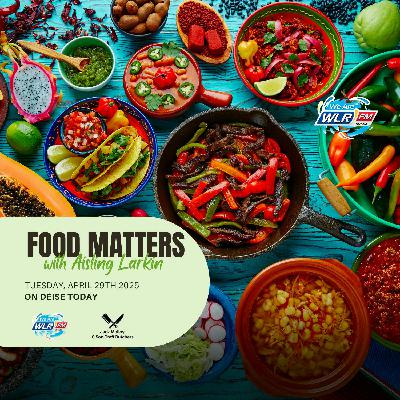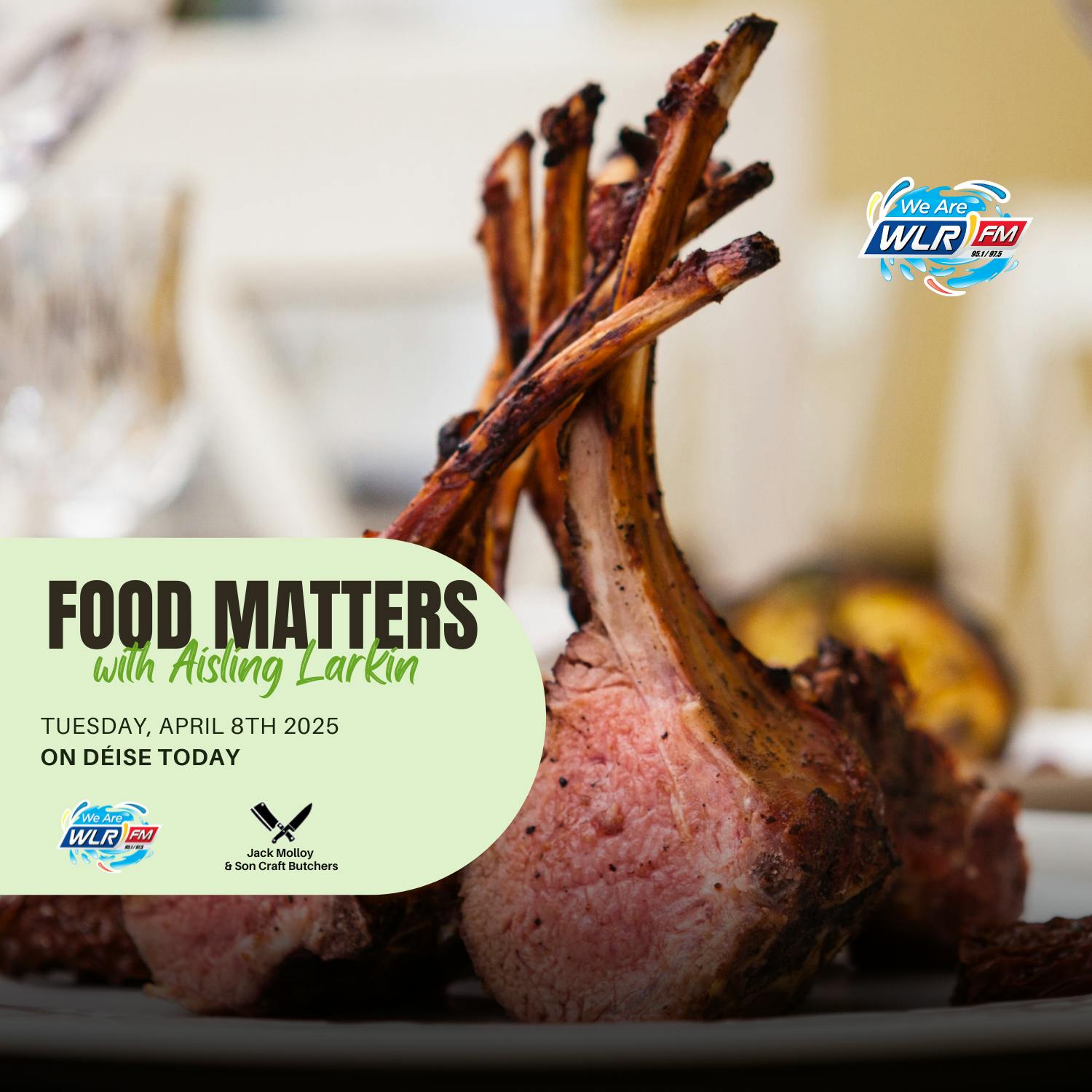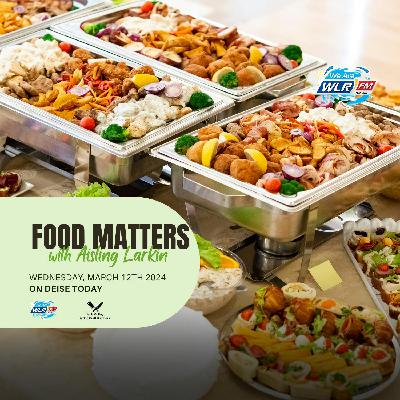Food Matters - Creating a Perfect Grazing Board
Description
In Episode 29 of Food Matters well-renowned Chef, TV Cook, and Food Media Broadcaster Aisling Larkin tells us all about creating a Grazing Board / Cheeseboard
Food Matters is brought to you thanks to Jack Molloy & Son Craft Butchers, Barrack Street, Waterford.
Creating a Perfect Grazing Board / Cheeseboard
Cheese boards are the pick and mix of the adult world …. versatile, aesthetic, delicious and social.
Cheese boards are all about a moment, a moment of relaxation and discernment.
A great cheese board begins with great cheese so in order to support local, support our heritage, our dairy culture, to bring money to our local economies and to cut down on air miles and be sustainable I am building this cheese board from Irish cheeses. I think there are over 50 artisan cheese makers in Ireland dotted al around the country so if you are out and about on your holidays this summer on a little staycation grab some local cheese and have a gorgeous cheese board for lunch.
But When ?? Cheese board before or after dessert
It’s important to remember that cheese is not an appetizer in France, but it may be offered at an apéro (apéritif). An apéro is a casual social gathering where drinks and snacks are served.
Cheese is eaten in moderation in France. Its quality as opposed to quantity. Eating a little high-quality cheese after your main meal will allow you to feel more satisfied, resulting in eating less cheese.
By the nature of eating it would make sense to keep going with the savoury and then go to dessert and coffee and petit fours but I am going to tell you my favourite is dessert first and then cheese… this means I can relax, kick the heels off, stretch and get ready for a long lingering sit down at a table, with good company, good wine and good cheese. At this point you know that you're in for the duration. It will begin with free-ranging and highly lubricated conversation In my humble opinion cheese first' means joylessness and restraint;
Base : wooden board, slate, marble slab
• Choose a decent-sized cheeseboard board that will comfortably hold your cheeses and have room for some decorative touches.
• A cheese board brings a certain air of occasion, all be it a sense of relaxed occasion to the eating experience.
• Use fruit like sprigs of grapes or whole/halved fresh figs and fresh green foliage for decoration.
• The Spanish love the combination of dried fruit and nuts with cheese, which can also be quiet rustic and colourful. Semi-dried apricots and dried apple or pear pieces make a good choice.
Cheese :
• Quality, Artisan, local, a story
• Odd number of cheeses 3, 5, 7
• Hard, Semi hard / semi soft, soft, blue, surprise
• Hard - cheddar, parmigiana, Cheddar, Gruyere, Emmental
If you always buy cheddar, try a French Comté instead. It’s delicious, smooth, nutty. Also Comté is the perfect champagne cheese.
• Semi hard - gouda, edam, Emmental
• Semi soft - manchego, gorgonzola, gorgonzola, roquefort
• Soft Cheese - Camembert, brie, feta, gorgonzola, mozzarella, blue
• Stinky Cheese - what is it .. Something stinky
Or, to use the technical term, washed-rind cheese. Wetting cheese with brine or booze as it matures encourages flavour-enhancing bacteria, a colourful (usually orange or red) rind and an occasionally overpowering pong. Hard continental types include gruyère, comté and raclette; soft include époisses de bourgogne, munster, reblochon and taleggio.
You’ve probably heard of Stinking Bishop, a pasteurised and veggie-friendly cow’s milk cheese from Charles Martell in Gloucestershire. Created in 1994, it’s washed in perry made from local pears. Newer kids on the block include Hampshire Cheeses’ Winslade, modelled on the Alpine Vacherin Mont d’Or, a fatty cow’s milk cheese. It is a lovely, indulgent cheese that can be served with a spoon……
• The rind …. Hard cheese - don’t eat the rind, soft cheese - eat the rind
• You want cheese of various shapes and sizes - rounds, barrel, squares, triangles, never a slice in sight.
• Cheese board Etiquette - Never, ever, cut the ‘nose’ (the point) off a wedge of cheese. This is a punishable crime! Wedges should be cut as neatly as possible down the side, so as to keep the original shape and make them presentable for the next person. Little wedges or slivers can be taken from whole soft or semi-soft cheeses.
• All your cheeses should be removed from the fridge at least an hour before serving to reach the optimum temperature for the flavours and aromas to shine.
• Set out your cheeses on the board, cover either damp the towel and allow to sit for an hour. The two things that are really important when it comes to cheese are temperature and humidity.
• There’s nothing worse than cold cheese: cold fat molecules retract, keeping most of the flavor shut away and keeping your guests from enjoying the cheeses you have selected to the fullest.
• Arrange cheeses in a circle / clockwise starting with the mildest and working its way up to the strongest flavour.
• French dining etiquette dictates that a platter of cheese should be passed around to each guest. Each guest slices off the amount of cheese that they’d like to eat. However this isn’t always done in reality. Sometimes the cheese platter is placed in the middle of the table for everyone to help themselves.
• When serving a cheese platter, there should never be more cheeses than there are guests.
Crackers, Bread or Panforte
Plain - no flavour - water crackers, then something oatie, digestive, rye, wheat, crisp, crunch, texture this adds texture and flavour profile to each mouthful and each bite.
Although a lot say that a hunk of crusty bread is the best thing to serve with all cheese and by the way never ever spread the cheese on the bread or smear it on. And don’t even consider trying to make a cheese sandwich
Panforte - spiced, sweet Italian bread cake.
Condiments and Dressing
Cornichons
Quince paste - some will say to avoid the sugary pastes like quince paste as they can be filling on the stomach and dull the flavour,
Chutney and relish
Grapes
Figs
Dried dates
Cutting the Cheese: The Cheese knife
Cutting the cheese - etiquette is huge here - under no circumstance do you leave a messy board for the next person.. it should look at beautiful as the first time at all occasions.
In that instance different knives are suggested for each of the different cheeses
cheese cutter, cheese slicer, cheese plane and others.
The essence of using different types of cheese knives is all about keeping the cheese in its original and in a presentable shape after cutting
There are about 9 different styles of cheese knife
Cheese knife - kitchen knife with holes
The cheese knife was designed to avoid that scenario. Not only is it super sharp — cutting through the firmest blocks of cheese like butter — but it also has large perforations along the metal so that cheese doesn’t stick to the blade. The cut cheese simply falls right off.
Cheese slice for harder
Leftovers Excess cheese
In the unlikely event you have leftovers from your cheese platter, Brien says you should wrap the cheese in baking paper first then loosely wrap it in clingfilm and pop it in a container in the fridge.
“You don’t want to wrap it really closely in the clingfilm as that will make it get sweaty,” she says. “Better still it makes a really delicious ... toastie.
Charcuterie
Dried cured meats
1. CHARCUTERIE MEATS:
• Fingal Ferguson's Gubbeen Smokehouse Chorizo
• James McGeough's Air-Dried Lamb Prosciutto (Connemara)
• The Wooded Pig's Free-Range Coppa
• Ballinwillin House Wild Venison Salami
• Real Wilde Irish Game Duck Prosciutto

